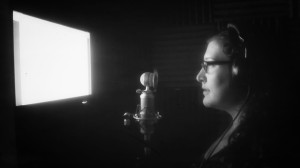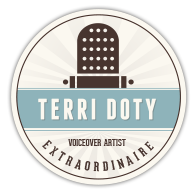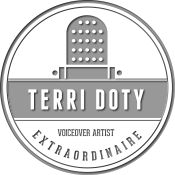Home Is Where The Studio Is
 … Okay, the title needs work, but you get the gist.
… Okay, the title needs work, but you get the gist.
Been talking a lot about home setups with fellow voiceover peeps: what works, what doesn’t, what’s necessary, what you can do without, blah blah blah.
Since I love talking about the biz and gear, why not post more about it? Might be a little heavy on the jargon, but feel free to ask away in the section below. I do love comments.
If you’re looking for something basic, maybe just for auditions and the occasional session or podcast or whatever, there are a few things to factor in. Of course, this’ll also come in handy if/when you’re ready to go full-scale.
Keep in mind, this isn’t for everyone. I know people that record auditions on their phones or throw a blanket over their head for soundproofing or have studios on standby… Everybody has their preferences.
No one wants to break the bank, I get it. I’m with you. With that in mind, PLEASE don’t buy whatever is cheapest. Get what is right for the task at hand.
What do I need?”
First, you’ll need a system. It’s function: record & edit audio. Of course, I’m gonna recommend Pro Tools. Yeah, it’s pricey, but there’s a reason it is the industry standard. If you’re a student, milk the discount. While Pro Tools is expensive, it’s one of the more user-friendly systems out there.
Other brands to consider: Sonar, Nuendo, & Cubase.
Input! More input!”
Interfaces come in all shapes and sizes, normally as USB or Firewire. Some are even installed in PCI slots or built into mics.
Nobody gets between me and my microphone.”
Spoken about microphones before here, so I’m not gonna gab too much about that. Though there are different types, you’ll likely end up purchasing a condenser first time around.
The Blue Yeti, one of those built-in examples, is a USB interface AND a microphone. Good for a laptop or desktop and easy to pack up for travel. Might work for you, might not. TEST IT OUT, I can’t stress that enough.
When it comes to the recording itself, distance is important. The closer you are to the mic, the less gain. This makes for less of the world outside. Plosives and mouth noise will also become more apparent. In general, keep about a “jazz hand” length away from the pop filter… And, yeah, get a pop filter. Don’t know what that is? You shouldn’t worry about sending off auditions because you’re not ready. Harsh but true.
Let me know if you hear a chicken.”
Actually said that to a client before. They definitely remembered me. And, no, they didn’t hear one luckily. Why? Soundproofing. It starts from the ground up and can get pricey real quick.
Studio foam reduces natural reverberations in a room, deadening the space around you. This aides with outside noise to a certain extent and helps give you that booth quality we all strive for.
There are dark forces working against you.”
Computer fans, air conditioners, dogs, chickens, planes, neighbors mowing their lawns… They all know when you’re recording and want to be part of the action.
If you have a spare room/closet, this is where studio foam comes into play. You can also buy an isolation booth to fit in the space if the budget allows.
Building forts (pillow or blanket) works on the road. Hell, that’s how I started with my first studio. Moving blankets were my weapon of choice. Whatever works, right? The idea is to keep it as quiet as possible.
We’ll fix it in post.”
Editing can be simple at times… Mostly in the audition process. That’s what I’m going to focus on. Again, want more, tell me in the comments.
You’ll want to trim out unwanted noise/breaths/dead air without sacrificing quality and make your coveted files flow as if it were done in one take. Sometimes it might be one take, good for you. Don’t get used to it.
Tempted to go into specifics about equalization (EQ if you’re nasty) and compression and all that other loveliness, but that’s for another post. Keep it simple and just make sure what is there represents your best.
What’s analog?”
Clients (or potential clients) usually ask for either MP3 or .WAV files. If they ask for one specifically, give them that one. Easy breezy.
The initial recording will be WAV. You’ll see lots of intimidating jargon (especially if you’re still learning) about sample rates. Don’t be scared.
SAMPLE RATE EX.- 16 bit 44.1k (i.e. CD quality)
The higher the rate, the “cleaner” the sound, which means the file size will be larger. For the purposes of auditions and keeping things simple (least for now), let’s stick with CD quality.
MP3 is a compressed WAV format used for emails and mp3 players (duh). Smaller files are easier to send, but you’ll lose of lot of what, in my opinion, makes the file special. And remember that MP3 isn’t a recording format, it’ll have to be exported as a WAV.
My brain is all hurty.”
Okay, that’s a lot of information to throw at you in one post. Hopefully, it all made sense.
Want me to expand on something? Comment section is your friend. Who knows, might end up blogging about it later.


Leave a Reply